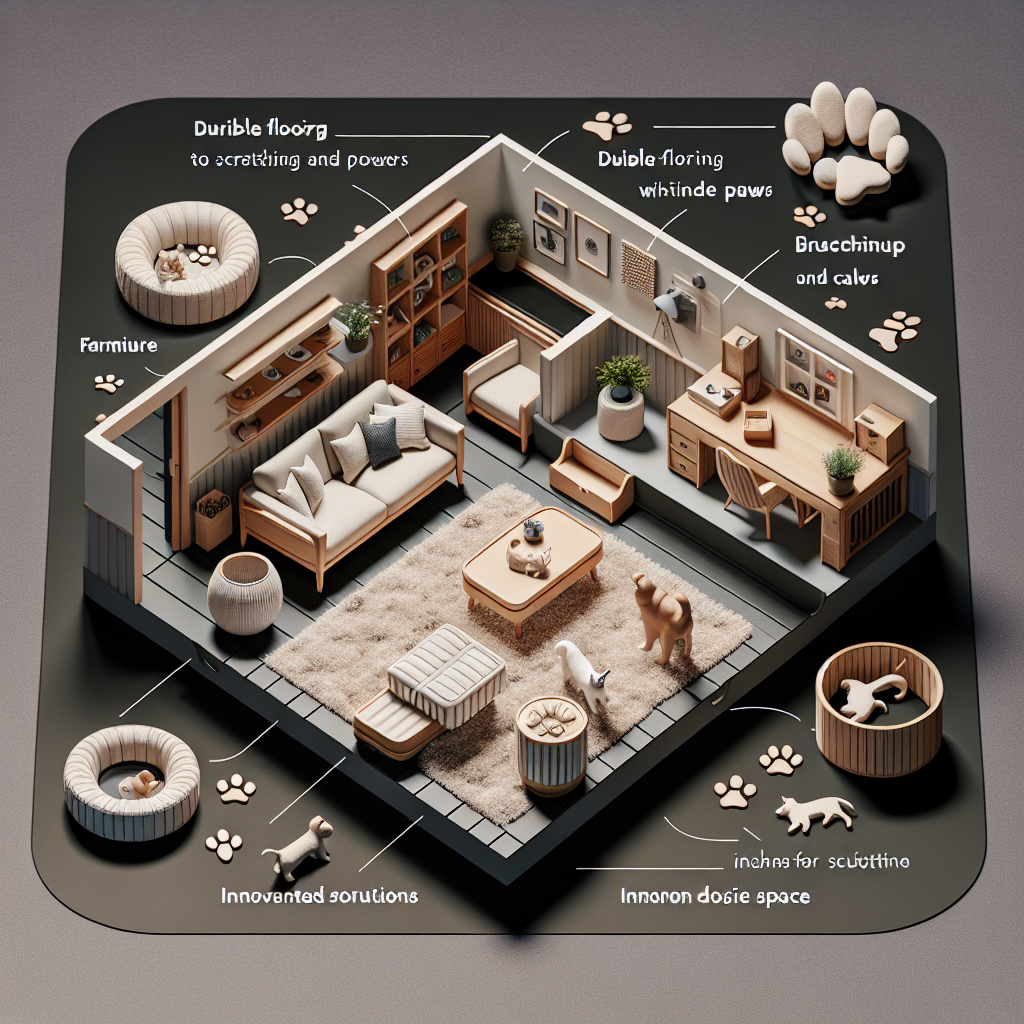
Designing a pet-friendly home can be a fun and rewarding experience. Whether you have a furry friend already or are considering bringing one into your home, creating a space that accommodates both your style and your pet’s needs is essential. From choosing durable materials and furniture to creating designated play areas and incorporating pet-friendly décor, there are numerous ways to make your home comfortable and safe for your four-legged companion. In this article, we will explore practical tips and creative ideas for designing a pet-friendly home that strikes the perfect balance between style and functionality.
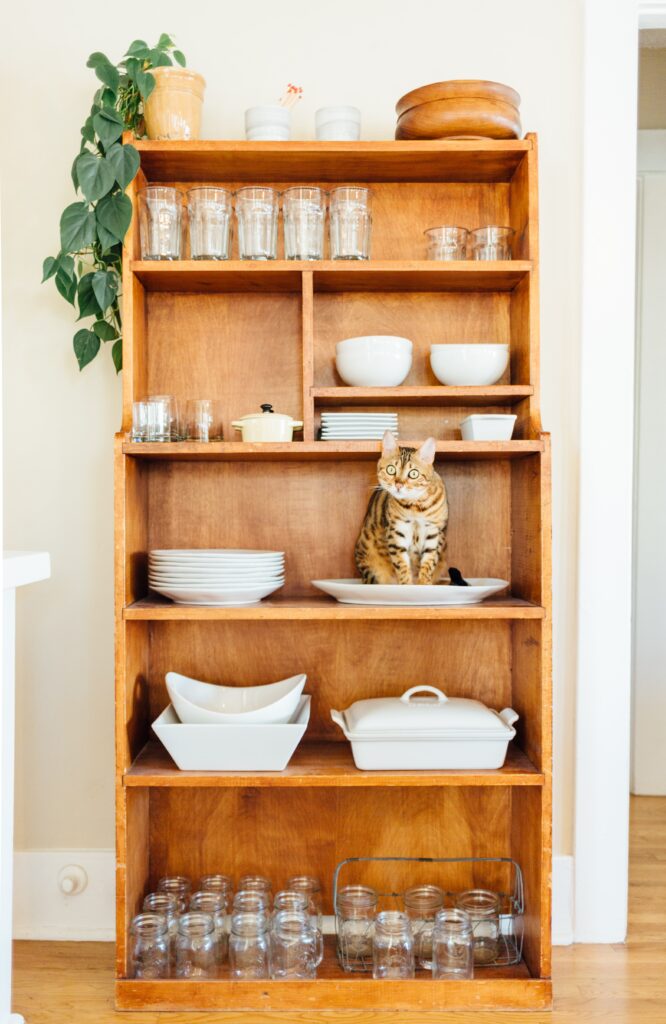
Choosing the Right Flooring
When designing a pet-friendly home, one of the first things to consider is the type of flooring that best suits your furry friend’s needs. Pets can cause wear and tear on certain types of flooring, so it’s important to choose materials that are durable and easy to clean.
Consider Pet-friendly Flooring Options
When it comes to pet-friendly flooring, there are a few options that are both practical and aesthetically pleasing. Hardwood floors, particularly those made from durable woods like oak or maple, can withstand the scratching and accidents that may occur with pets. Additionally, laminate flooring can provide a similar look to hardwood while being more resistant to scratches and stains.
Another popular choice for pet-friendly flooring is tile or stone. These materials are easy to clean and are resistant to scratches. However, it’s important to choose a textured tile to prevent pets from slipping on the smooth surface.
Avoid Carpeting
While carpeting may be cozy and comfortable, it is not the ideal choice for pet owners. Carpets can easily trap pet hair, making it difficult to clean and maintain a hygienic home. Additionally, pets may have accidents on the carpet, leading to stains and odors that are difficult to remove. If you’re set on having carpet in your home, consider a low-pile carpet or carpet tiles that are easier to clean.
Opt for Stain-resistant Materials
Pets can be messy, so it’s essential to choose flooring materials that are stain-resistant. Look for options that have a protective sealant or coating to prevent stains from setting in. Additionally, consider lighter colors or patterns that can help disguise any accidents that may occur.
Selecting Durable Furniture
When designing a pet-friendly home, it’s important to choose furniture that can withstand the wear and tear that comes with having pets. From scratches to shedding, pets can put furniture to the test. Therefore, it’s crucial to choose materials and designs that can endure their antics.
Choose Pet-friendly Fabrics
When it comes to upholstery, opt for pet-friendly fabrics that are durable and easy to clean. Materials like leather or microfiber can be great choices as they are resistant to scratches and stains. Avoid fabrics like silk or velvet, as they can easily be damaged by pets.
Opt for Furniture with Removable Covers
Pets can shed fur and have accidents on furniture, so it’s helpful to have furniture with removable and washable covers. This makes it easier to clean up any messes and maintain a fresh and hygienic environment. Slipcovers can be a great option as they are easy to remove and replace if they become stained or damaged.
Consider Scratch-resistant Surfaces
Pets, especially cats, may use furniture as scratching posts. To prevent damage to your furniture, consider choosing materials that are scratch-resistant, such as leather or furniture with protective coatings. Alternatively, provide designated scratching posts or mats to redirect your pet’s scratching behavior.
Creating a Dedicated Pet Space
Designating a specific area for your pets can help them feel comfortable and included in your home while also keeping your space organized and clean. By creating a dedicated pet space, you can easily store supplies, incorporate pet-friendly furniture, and ensure your pets have their own designated area to relax and play.
Designate an Area for Pet Supplies
Having a designated area for pet supplies can help keep your home organized and make it easier to find everything you need for your furry friend. Consider installing built-in shelves or cabinets to store food, toys, and other pet essentials. This not only keeps everything in one place but also prevents your pets from accessing items they shouldn’t have.
Incorporate Pet-friendly Furniture
When creating a dedicated pet space, it’s important to include furniture that is specifically designed for your pets’ needs. This can include pet beds, scratching posts, and even pet-friendly seating options like chairs or sofas that are specially made with durable fabrics and materials.
Include Storage Solutions for Toys and Accessories
Pets often come with a multitude of toys, grooming tools, and other accessories. To keep these items organized and easily accessible, consider incorporating storage solutions specifically designed for pets. This can include toy bins, hooks for leashes and collars, and compartments for grooming supplies. Not only does this help maintain a tidy space, but it also prevents your pets from getting into items they shouldn’t have.
Ensuring Pet Safety
While designing a pet-friendly home, it’s crucial to prioritize your pets’ safety. By taking a few precautionary measures, you can minimize potential hazards and create a secure environment for your furry companions.
Secure Hazardous Areas
Certain areas of your home may contain hazards that could be harmful to your pets. Identify these areas and secure them to prevent accidents or injuries. This may include using baby gates to block off staircases or rooms where pets could get into dangerous substances or objects.
Install Pet-friendly Gates and Barriers
In addition to securing hazardous areas, installing pet-friendly gates and barriers can help create designated spaces for your pets. These gates and barriers can be used to restrict access to certain areas or rooms while still allowing your pets to move around freely in safe areas.
Properly Store Medications and Cleaning Supplies
To keep your pets safe, it’s important to store medications and cleaning supplies properly. Make sure these items are stored in secure cabinets or lockable drawers to prevent your pets from accidentally ingesting toxic substances. It’s also wise to keep the contact information for your veterinarian readily available in case of emergencies.
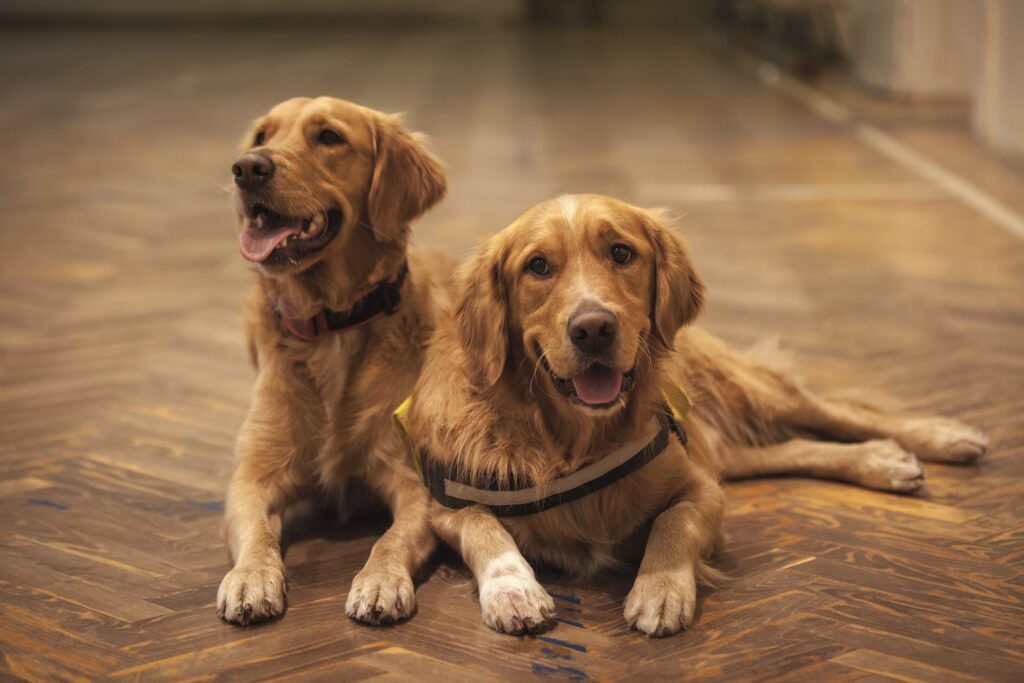
Integrating Pet-friendly Features
To truly create a pet-friendly home, consider integrating features that cater to your pets’ needs and make their lives more comfortable. By incorporating pet-specific elements into your design, you can enhance both the functionality and enjoyment of your home for both you and your furry companions.
Install a Pet Door
A pet door allows your pets to come and go as they please, providing them with a sense of independence and freedom. These doors can be installed in exterior doors or walls, giving your pets easy access to outdoor spaces.
Incorporate Built-in Feeding Stations
Built-in feeding stations can help keep your pet’s food and water bowls in one designated area, preventing spills and making mealtime more organized. Consider integrating a feeding station into your kitchen or laundry room, complete with built-in bowls and easy-to-clean surfaces.
Include Pet-friendly Windows and Window Treatments
Pets love to look out the window and observe their surroundings. Including pet-friendly windows that are lower to the ground can give them a better view and make them feel more involved in their environment. Additionally, choose window treatments that are resistant to pet hair and easy to clean, such as blinds or washable curtains.
Designing the Outdoor Space
While a pet-friendly home should prioritize indoor design, it’s equally important to create a safe and enjoyable outdoor space for your pets. By considering their needs and incorporating pet-friendly elements outside, you can extend your pets’ living space and enhance their overall well-being.
Create a Secure and Enclosed Yard
Designing a secure and enclosed yard is essential for the safety of your pets. This can include installing fences and gates to prevent them from wandering off or accessing areas that could pose risks. Ensure that the fencing is tall enough to prevent them from jumping over and that there are no gaps or holes they can squeeze through.
Provide Shade and Shelter for Your Pet
Just like humans, pets need protection from the elements. Make sure your outdoor space provides ample shade and shelter to keep your pets cool in the summer and protected during inclement weather. This can include installing awnings, umbrellas, or building a covered area specifically for your pets.
Include Pet-friendly Landscaping
When designing the landscaping in your outdoor space, consider creating a pet-friendly environment. Be mindful of the plants you choose, making sure they are non-toxic to pets. Additionally, incorporate grassy areas or designated pet play spaces where your furry friend can comfortably roam and play.
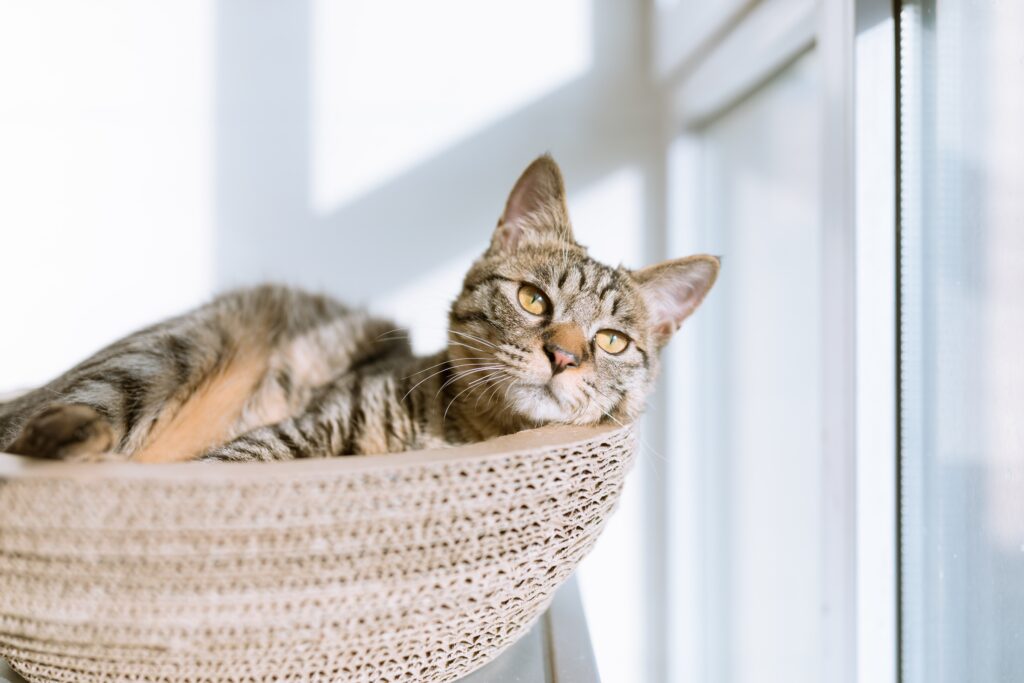
Choosing Non-toxic and Pet-safe Materials
When designing a pet-friendly home, it’s important to select materials that are non-toxic and safe for your pets. This goes beyond just flooring and furniture and extends to other aspects of your home.
Opt for Non-toxic Paint and Finishes
Choosing non-toxic paint and finishes for your walls and furniture is essential to ensure your pets’ safety. Many conventional paints and finishes contain harmful chemicals that can be toxic if ingested or inhaled by your pets. Look for pet-friendly alternatives that are labeled as low VOC (volatile organic compounds) or non-toxic.
Avoid Harmful Plants and Flowers
Some common houseplants and flowers can be toxic to pets if ingested. When designing your home, research which plants are safe for your pets and avoid bringing harmful ones into your space. Opt for pet-friendly and non-toxic plants like spider plants, Boston ferns, or African violets.
Select Pet-friendly Cleaning Products
Cleaning products can also be potentially harmful to your pets. When choosing cleaning supplies, look for pet-friendly options that are free from harsh chemicals and toxins. There are many pet-safe cleaning products available on the market that effectively clean while keeping your pets safe.
Minimizing Noise and Stress
Pets can become stressed or anxious in noisy or chaotic environments. Therefore, when designing a pet-friendly home, it’s important to create a calm and soothing atmosphere that minimizes noise and reduces stress for your furry companions.
Consider Soundproofing Options
If your home tends to have a lot of noise, consider incorporating soundproofing methods to create a more peaceful environment for your pets. This can include installing sound-absorbing materials like acoustic panels or rugs to minimize echoes and dampen noise.
Designate Quiet Areas for Your Pet
Creating designated quiet areas for your pets allows them to have their own space to retreat to when they need some peace and quiet. This can be a cozy corner with a comfortable pet bed or a separate room where they can relax undisturbed.
Implement Soothing Elements
Incorporating soothing elements into your home can help calm and relax your pets. Consider adding features like natural elements (such as indoor plants or a pet-safe aquarium), soft lighting, and soothing music. These subtle additions can create a tranquil ambiance that promotes relaxation for both you and your pets.
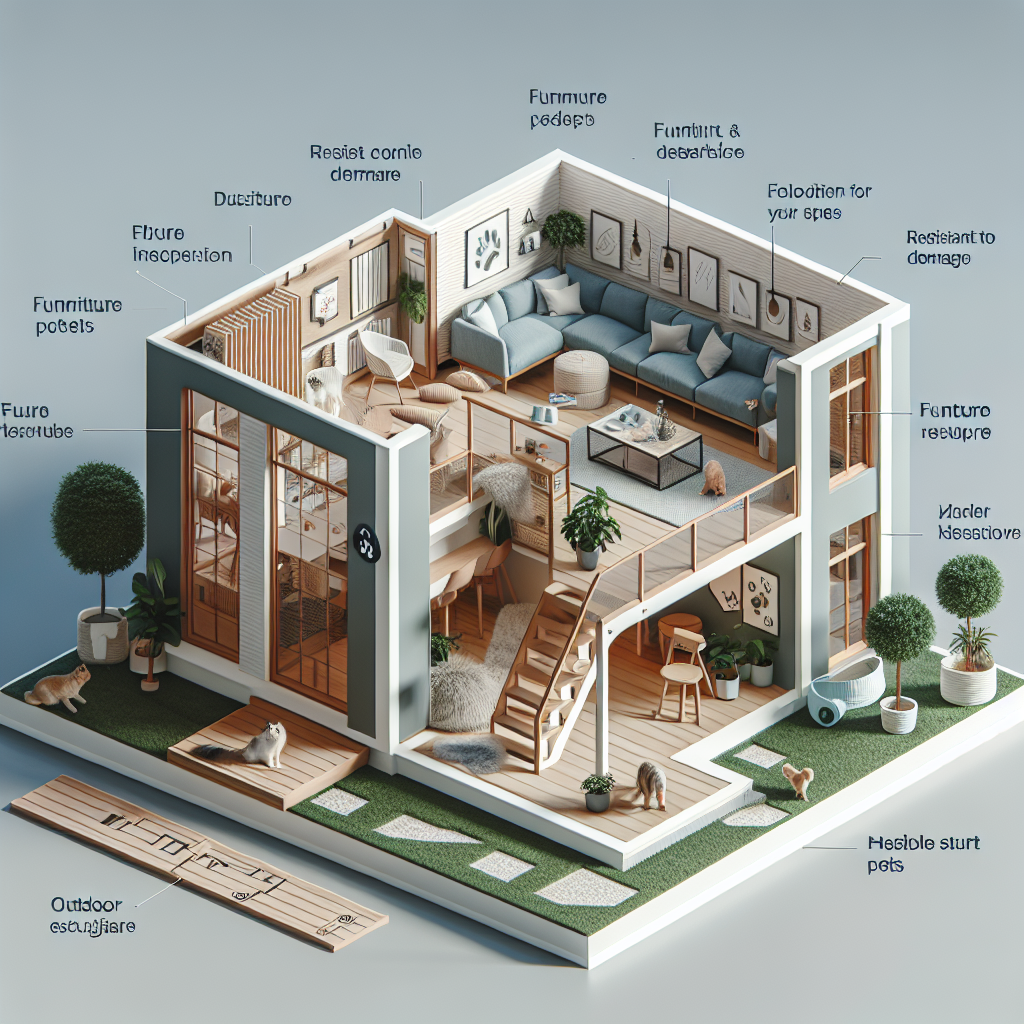
Keeping a Clean and Hygienic Home
Maintaining a clean and hygienic home is crucial when designing a space that is pet-friendly. Pets can naturally introduce dirt, hair, and odors into your home, so establishing a regular cleaning routine and using pet-friendly cleaning supplies are essential.
Establish a Regular Cleaning Routine
To keep your home clean and fresh, establish a regular cleaning routine that includes vacuuming or sweeping floors, dusting furniture, and wiping down surfaces. Pay extra attention to areas that your pets frequent, such as pet beds or feeding stations.
Use Pet-friendly Cleaning Supplies
When cleaning up after pets, it’s important to use cleaning supplies that are safe for them. Avoid cleaning products that contain harsh chemicals or toxins that can be harmful if ingested or come into contact with your pet’s skin. Instead, opt for pet-friendly and non-toxic cleaning solutions that effectively remove stains, odors, and bacteria.
Address Odor Prevention and Control
Pets can sometimes leave behind unpleasant odors, especially when accidents happen. To address odor prevention and control, make sure to properly clean and deodorize any affected areas. Use pet-friendly odor eliminators or natural remedies like baking soda to neutralize odors. Regularly washing pet bedding and grooming your pets can also help minimize odors in your home.
Seeking Professional Advice
When designing a pet-friendly home, seeking professional advice can be beneficial in ensuring that your space is both functional and aesthetically pleasing. Interior designers and veterinarians can provide valuable insights and recommendations to create a home that caters to the needs of both you and your pets.
Consult with an Interior Designer
An interior designer can help you navigate the world of pet-friendly design by providing expert advice on materials, layouts, and overall aesthetics. They can offer solutions tailored to your specific needs, ensuring that your home is not only stylish but also practical for your pets.
Receive Input from a Veterinarian
Veterinarians have extensive knowledge about pet behavior and health. They can provide guidance on creating a pet-friendly home that supports your pets’ physical and mental well-being. Seek their input on aspects such as flooring materials, furniture choices, and layouts that promote a safe and comfortable environment.
Gather Inspiration from Pet-friendly Homes
To gather inspiration, explore pet-friendly homes through various sources such as magazines, websites, or social media platforms. Look for examples of design elements that cater to pets’ needs and incorporate them into your own design. By researching and drawing inspiration from others, you can ensure that your pet-friendly home is both functional and visually appealing.
Designing a pet-friendly home involves thoughtful consideration of your pets’ needs and safety while still creating a beautiful and comfortable space for yourself. By following these tips and incorporating pet-friendly features, you can create a home that harmoniously accommodates both you and your four-legged family members. Remember, a pet-friendly home is not only beneficial for your pets but also enhances the overall enjoyment and well-being of your entire household.
